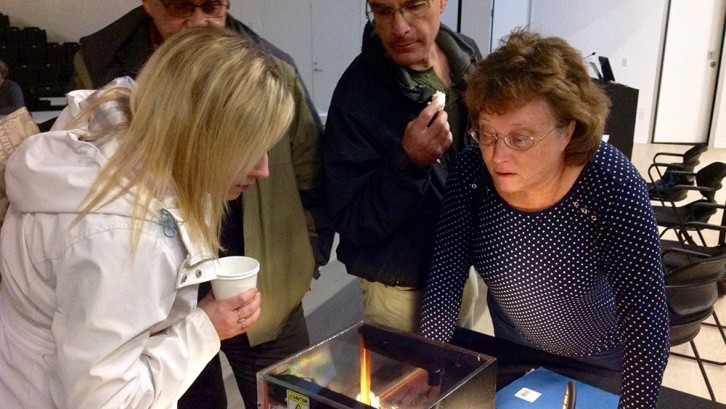Health
N.S. Lung Association present the dangers of radon at Health Canada science talk
16 per cent of all lung cancer deaths in Canada are linked to radon, says Health Canada

caption
Robert Burns looks on as a panel of scientists present the dangers of radon at the Halifax Central Library.
caption
Robert Burns looks on as a panel of scientists present the dangers of radon at the Halifax Central Library.You can’t see, smell, or taste it. Yet it’s in your home and could be harming your family.
Health Canada led an information session on radon at the Halifax Central Library Monday night as part of the Nova Scotia Lung Association’s Take Action on Radon campaign.
The campaign is part of a national program to raise awareness about radon – a radioactive gas that is present in every home in the country, according to Health Canada. The government department has identified radon as the leading cause of lung cancer in non-smokers.
“In terms of the health implications of radon exposure, the only thing that’s connected to it is a long-term increased risk of developing lung cancer,” said Lance Richardson-Prager, a regional radiation specialist for Health Canada.
November marks Radon Action Month in Canada. This year, the Nova Scotia Lung Association wants to bring the issue closer to home in the Tantallon area, which has been identified as a region with elevated levels of radon due to its geology.
Free test kits were distributed to 200 Tantallon area homes last week.
“We had a great pick-up, it was very successful,” said Robert MacDonald, director of health initiatives with the Nova Scotia Lung Association. “We got out the kits in a timely, quick fashion. To me, that’s proven that awareness is becoming more prevalent among homeowners.”
Robert Burns, one of 15 audience members at the public event, installed a mitigation system in his Bedford home last August after performing two radon tests.
“I did two different tests, with two different machines, and came up with two wildly variant answers,” said Burns about his experience using a radon detector. “I did the radon mitigation anyway because both of them were over 200 [Bq/m³].”
Richardson-Prager of Health Canada said “there is some fluctuation based on the time of year when you test.” He recommends testing your home during the colder months because windows and doors are most likely closed, giving a more representative reading of radon levels.
‘Everyone should test their homes’
Health Canada’s radon guideline considers levels higher than 200 becquerels per cubic metre (Bq/m³) to be “elevated.” A 2012 national survey found 10.7 per cent of homes tested in Nova Scotia to be above the national guideline.

caption
Guests at the science talk in Paul O’Regan Hall watch as a glass box fills with radon gas.John Drage, a senior hydrogeologist at the Nova Scotia Department of Natural Resources believes every Canadian should test their home. He said Canada has the world’s largest deposits of high-grade uranium, the metal responsible for producing radon gas.
“There are no radon-free areas in Canada,” said Drage.
He said avoiding radon exposure is easy and inexpensive and recommends detector kits and mitigation systems as the best way to fix the problem.

